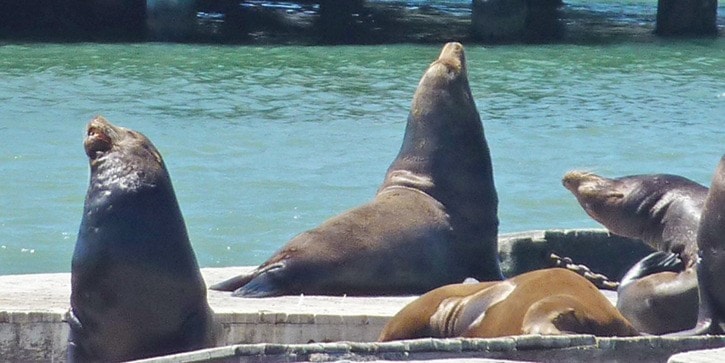Ocean waters between the mainland and the Gulf Islands are home to many marine mammals, including whales, sea lions, porpoises and dolphins.
Two species of sea lion, the California and the Steller sea lion, are present in southern B.C. waters at this time of year. They can sometimes be seen swimming in the sea or hauled out on rocky islets and jetties.
Sea lions are much larger and noisier than the more common harbour seals, which belong to a separate family.
Even from a distance, one soon hears the barking calls of California seal lions or the loud growls and grunts of enormous male Steller sea lions.
They raise themselves on their front flippers and turn their rear flippers forwards, so that they are quite agile on land.
Under water, they are sleek, fast predators, feeding on herring, hake, octopus and rockfish, depending on the time of year.
They are not at the top of the food chain, however, as they are hunted by transient orcas.
The histories of Steller and California sea lions illustrate the significance of human predation and long-term oceanic climate cycles on marine mammals.
Steller sea lions breed on the B.C. and Alaska coast and some disperse to the Salish Sea in winter.
They were once aggressively culled through hunting and population-control programs but, since 1970, the B.C. colonies have rebounded.
This is not the case for the once-abundant Gulf of Alaska populations, which have declined dramatically since the 1950s.
The northeast Pacific Ocean has been undergoing significant ecological change and Steller sea lions, harbour seals and northern fur seals are all struggling to survive. With herring in short supply there, the sea lions feed on less nutritious fish, such as pollock.
Only male California seal lions spend the winter in B.C. They often gather out on the eight-kilometre Steveston jetty in spring.
Until the 1960s, they were rarely seen locally. Their presence here now may be overflow from booming southern populations, or due to cyclical ocean conditions.
California sea lions are recovering from nearly 200 years of extermination in California and Mexico but are now thriving.
Boat trips depart from Steveston harbour to view sea lions on the jetty, or you can watch for them in deep water off White Rock pier, Point Roberts or the Gulf Islands.
Anne Murray, the author of two nature books available in local book stores, writes monthly in the Peace Arch News – www.natureguidesbc.com
